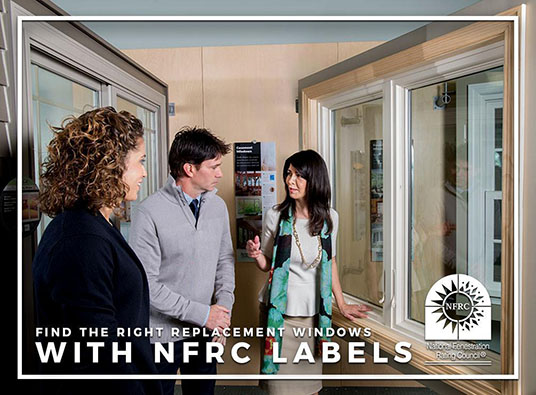

Spend enough time looking at replacement window units and you’ll notice how each one has a white label attached to the glass. If you’ve wondered what these labels are for and how they affect your next replacement windows installation, let Renewal by Andersen® of Atlanta give you a closer look.

NFRC Energy Performance Labels
The white labels are called energy performance labels. These labels are issued by the National Fenestration Rating Council (NFRC) after a fenestration unit is tested and certified for its energy performance. These labels were created by the NFRC as a standardized way to measure a specific window’s energy performance. Homeowners can also use them to make informed decisions about which units work best with their home’s unique energy requirements.
These labels list the following four energy ratings:
U-Factor – U-factor measures how well the replacement window keeps heat from escaping a room, and is represented as a number between 0.20 and 1.20: the lower the number, the better it is at keeping heat in. If your energy bills are significantly higher during winter, look for double hung windows with low U-factor. Some product literature may alternatively list R-values instead of U-factor. Both measure heat transfer, but R-values measure a window’s resistance to heat transfer, making it the inverse of U-factor. Lower U-factor equals higher R-value.
Solar Heat Gain Coefficient (SHGC) – SHGC measures how well a replacement window resists unwanted heat gain from direct sunlight, represented as a number between 0.0 and 1.0. Choose a low value if you want to reduce your indoor cooling expenses during summer. Our High-Performance™ Low-E4® glass options typically have low SHGC values, and are ideal for such applications.
Visible Transmittance (VT) – VT measures how well a replacement window lets natural light in, also represented as a number between 0.0 and 1.0. For optimized daylighting, choose a higher VT value.
Air Leakage (AL) – AL measures how much air will enter a room through the closed window, represented as a number between 0.1 and 0.3. For fewer drafts, choose a lower AL value.
Finding The Right Windows Using These Ratings
Every home has its own unique requirements, and these white labels can help you choose the right windows based on your needs. For instance, if you want a room to be less bright, choose casement windows with low VT values. Homes in colder regions would benefit from windows with high SHGC for better indoor heating.
Our expert consultants can also help you find the right windows for your home. Call Renewal by Andersen® of Atlanta today at (866) 609-5033 or fill out our contact form to schedule a free estimate and in-home consultation. We serve homeowners in Atlanta.